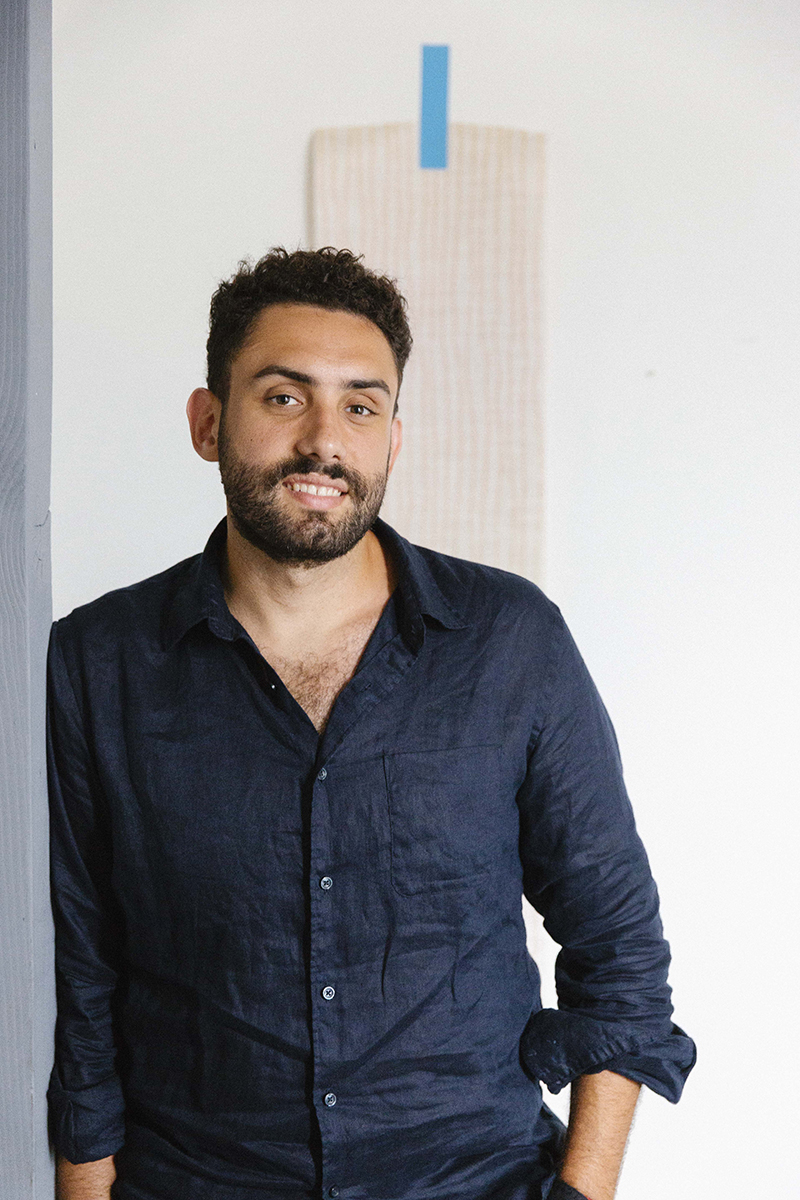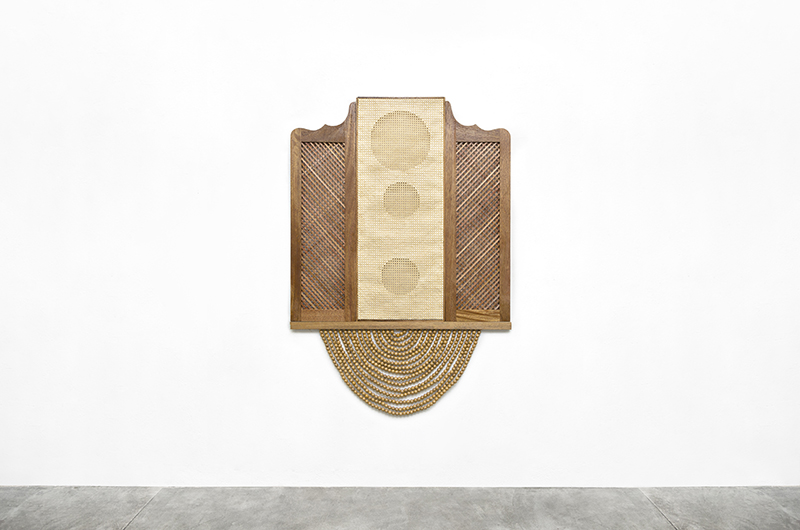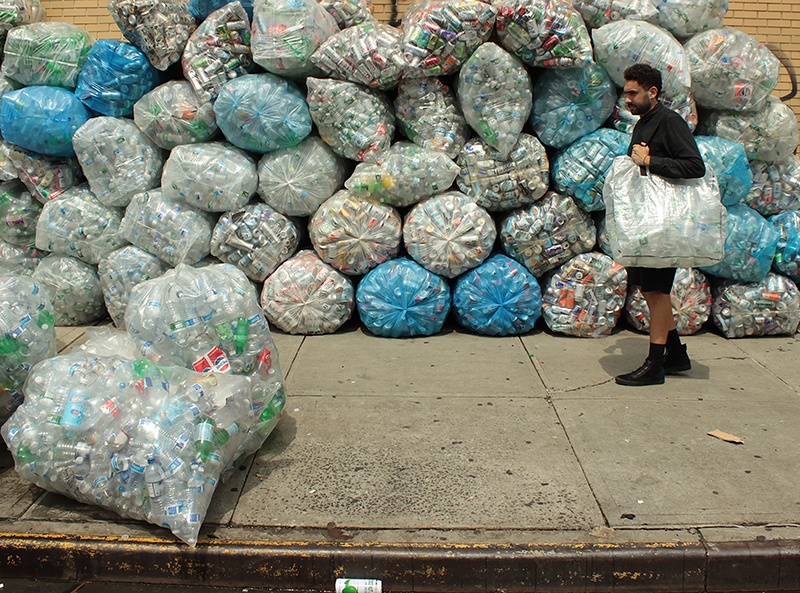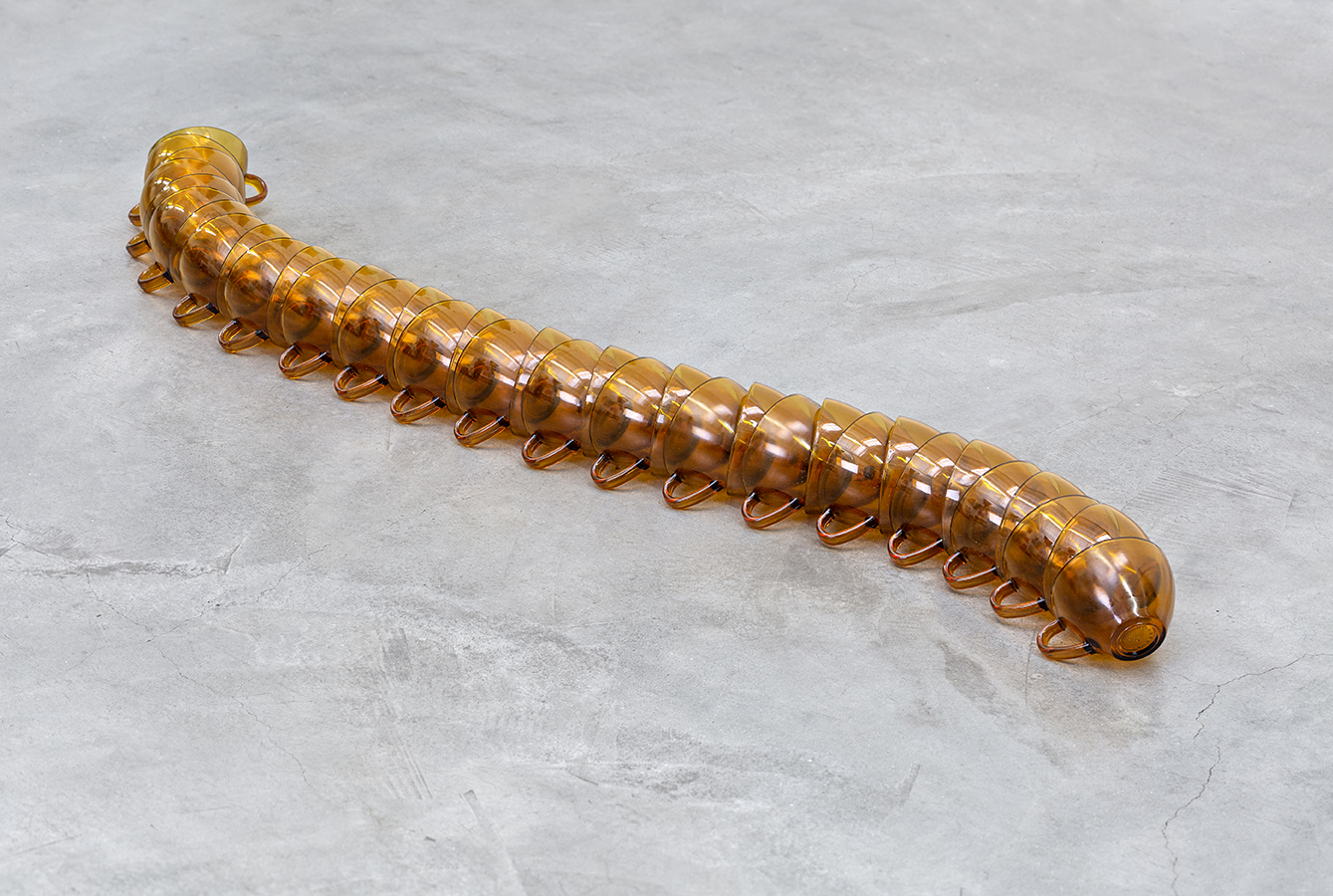Contemporary artist Mano Penalva allows materials to dictate form and come together in artworks that are deliberately non-representational.
My work, I like to think, is about worldly things – improvisation, reuse, and reconfiguration are at stake. I am interested in everyday urban constructions such as the decorative and practical use of quotidian materials, both of which mirror the socioeconomic and cultural realities of a people. I try to understand how ordinary objects participate in a culture, their uses, and the dialogues they form with one another.
Featured image: Centipede. Photo by Daniela Ometto.

Artist portrait. Contemporary artist Mano Penalva.
How did your tryst with art begin?
I started out in the field of art by taking a drawing and painting course, like many children. But the most interesting thing was I liked to create gardens. I had the opportunity to be with nature until my youth and making a garden was a wonderful thing. I think it is close to a piece of art. Once done, it continues to reverberate with the new. Another factor that stimulated me was DIY television shows. I watched everyone I had on Brazilian TV. These shows helped me hone my manual skills.
Important people stimulated me a lot in my career, such as teachers of drawing and painting at the free courses in Bahia, and my family. But the biggest leap was when I understood that I could make art a profession. When I entered the School of Visual Arts at Parque Lage in Rio de Janeiro, I had the opportunity to live with people who had made art a profession and could pay the bills.

Contemporary artist Mano Penalva. Babel, 2016, 280 x 300 cm.
What were your biggest lessons and hurdles along the way? Any memorable moment?
Being persevering is more important than talent. Dedication to art is one of the elements that I consider most important and the other is, have fun. Being an artist is already a political act. So, the important thing is to allow art to be a more natural way of expressing how it relates to the world.

Contemporary artist Mano Penalva. Photo by Leandro Viana.
What inspires you?
My process of creation entails many walks on streets in different parts of the world. I believe my work is the passage that connects the house and the street. I think it is about observation of relationships, gestures and customs. Also, I love to think that every artist is a collector of stories, things and images.
I developed the works Maíz and Hasta Tepito in 2017 in Mexico City. For Maíz (Corn), I built a yellow corn made with Cheetos, with proportions similar to a popular corn sold in Mexico but imported from the United States. I photographed the object and printed 3,000 postcards that I distributed to informal merchants in the city’s main tourist spots. All the proceeds were kept by the sellers.
Take us through your process and continuous frameworks of reference.
Continuing my interest in systems of exchange, I developed Hasta Tepito, which imperfectly translates to “Until Tepito”, from a conversation I had with a taxi driver in Mexico City. The driver warned me not to visit the “dangerous” neighbourhood of Tepito, not knowing that the reason for my trip was precisely to study the popular markets of the city. This interaction motivated me to create a kind of game to get to Tepito, with certain rules. First, I followed people who carried large bags, assuming they were part of a natural flow of merchants. People also could not know they were being followed, and if they noticed the camera I would stop filming. Through this game, I investigated one of the effects of globalisation: a fusion of objects, people, and their paths in an urban space.

Bang Bang. Contemporary artist Mano Penalva.
How do you balance art and life?
Art and life is one thing. But if I want to unravel this equation, I always like to do the exercise of separating art from the art market. This is a difficult exercise, but it is becoming more and more important. The market is very demanding, but we need to remain persevering in what we believe and want to do.

Balneário, Contemporary artist Mano Penalva. 2016, 130 x 110 x 100 cm.
Who are your conductors?
Burle Marx, Helio Oiticica, Marepe, Abraham Cruzvillegas, Francis Alys, Joe Fyfe, David Hammons, Franz West… are some artists who fascinate me. But above all, I see them as artists sensitive to everyday, the ordinary, the surroundings, which is where my research goes. One of my favourite things to do on the Internet is to see the directions Google gives us from a name. I like this infinite possibility of art, where the same thing can be thought of and worked on in infinite ways.

Desenhos Interessados. Contemporary artist Mano Penalva. Photo by Camila Crivelenti.
What are you working on now? What is coming next season?
In February I will be at the Fountainhead residency in Miami, where I will continue my research about the imagination of Latin America. Also, I am preparing my next exhibition, which opens in the first semester at the Museum of Modern Art Aloisio Magalhães, Recife, Brazil curated by Wagner Nardy. I am also preparing my next book. My compositions create a rupture in normality.
Before you go – you might like to browse our Artist Interviews. Interviews of artists and outliers on how to be an artist. Contemporary artists on the source of their creative inspiration.












Add Comment